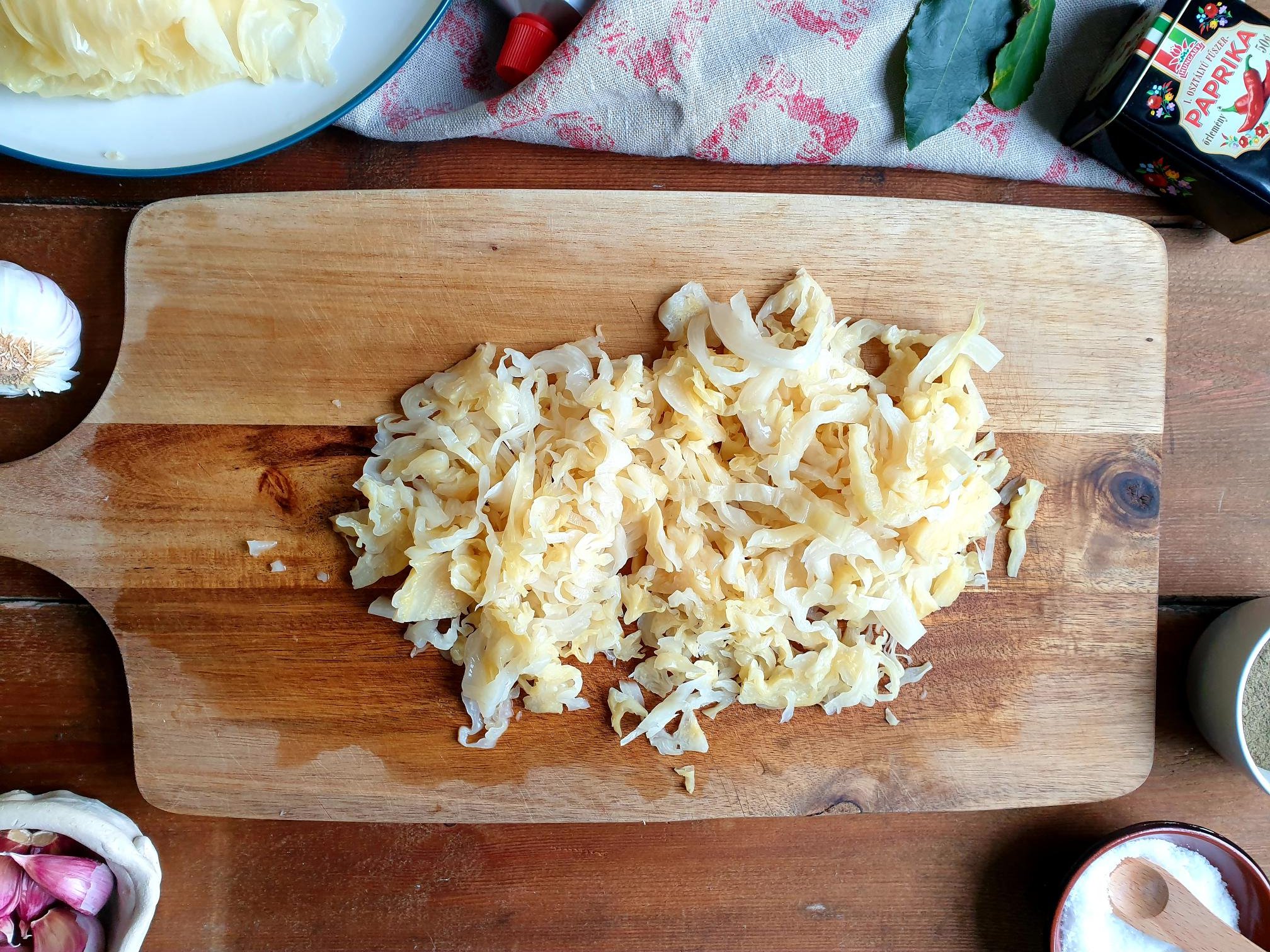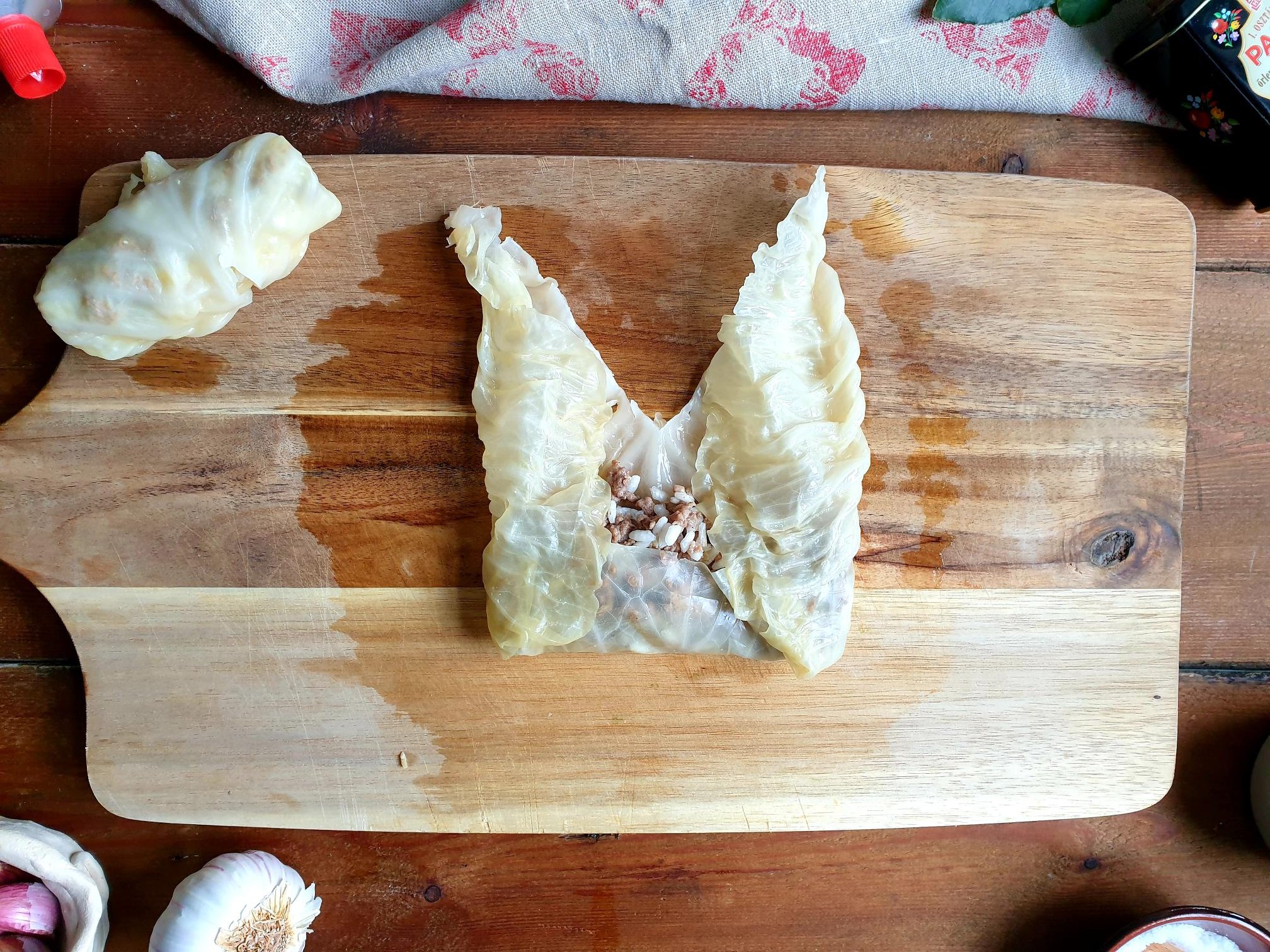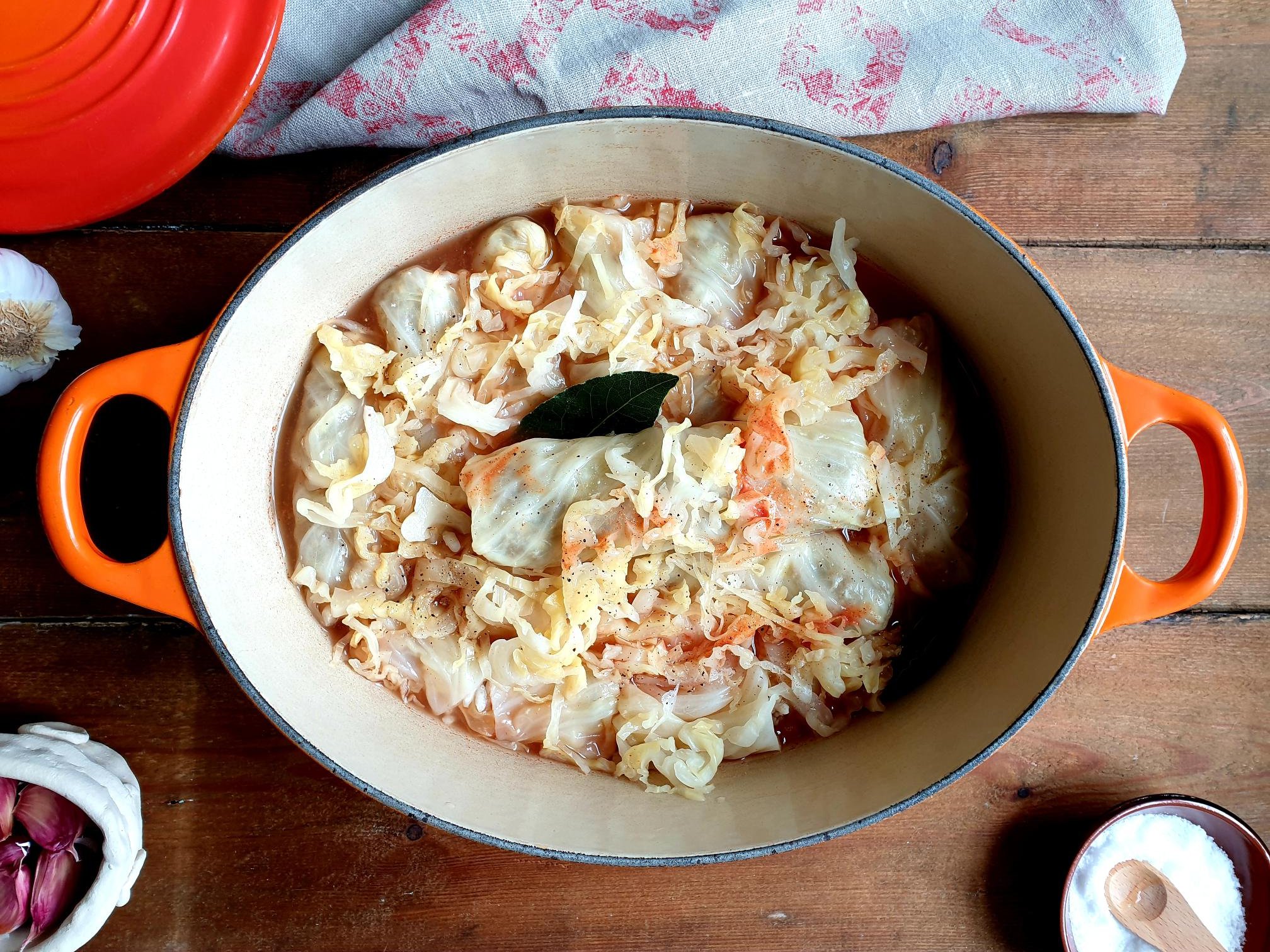Szegedin Goulash – Hungarian style Sauerkraut and Pork meat stew Recipe
This traditional, Hungarian in origin stew, is flavourful, hearty and comforting, made by slowly simmering sauerkraut with pork and enriched by adding sweet ground Hungarian paprika and caraway seeds. If you are a lover of a sauerkraut, this stew could not be more perfect during colder months, and it can easily become a vegetarian and vegan friendly dish, just by omitting the meat , however, Rosl Philpot in her book, Viennese Cookery, Hodder and Stoughton Limited 1965, indicates that this dish, “It's definitely not for dainty appetites, nor for those who dislike Sauerkraut”.
Although this particular type of goulash is well known and famous in Hungary, it is also very popular in Germany and Austria, where it is called Szegedinergoulash, and in all the other countries that were once part of the Austro-Hungarian Empire, including Slovenia, where this stew has established itself, and it is a very much loved dish and simply called Segedin.
It is cooked, up and down the country with slight variations, mainly in households, although it is sometimes found on the menus in more informal family run restaurants where more rustic dishes are served.
Variations of this stew could include the use of smoked or unsmoked lardons or sliced bacon which is fried together with the onions and the garlic and sometimes all-purpose flour would be used to thicken the stew.
The origin of this dish is disputed and it is believed that the stew was originated in the Hungarian town of Szeged, hence the dish is called 'Szeged goulash,' the other theory leads us to believe the legend that says that the dish was accidentality invented by the famous 19th century Hungarian poet, lawyer, and journalist Jozseff Székély, and consequently the name of the dish could also be called Székelygulyása or Székely Gulyás.
The legend says the poet once walked into a guest house where he was told, due to late hours, they only had some sauerkraut and some cooked meat left. He ordered them to mix the two together and to heat it up, and this is how the sauerkraut goulash was born.
I simply love this stew and grew up with it. My mum would always make a huge pot of it, ideally a day in advance, so all the flavours can mix well and absorb. This dish has such a distinctive aroma that when I was coming home from school, I could smell it even before I walked through the door. I knew very well that I would soon be having a very warm, comforting meal, especially welcome on cold days.
This is an old peasant food at its very best and I am sharing here my mother's recipe.
Recipe
Ingredients
4 Tbsp olive oil or vegetable oil
onions (about 200g), peeled and finely chopped
3 cloves of garlic, peeled and crushed
about 500g pork shoulder or pork shoulder steaks, trimmed off excessive fat and diced
1 jar of sauerkraut (about 650g drained sauerkraut) Taste the sauerkraut before cooking it, if too acidic for your liking, put it in a colander and give it a quick rinse under cold running water.
1 bay leaf, fresh or dry
1 Tbsp sweet ground Hungarian paprika, or to taste
1 Tbsp tomato paste
¼ Tsp caraway seeds, crushed in pestle and mortar (can use whole caraway seeds if you do not have pestle and mortar)
5 black peppercorn or juniper berries
sea salt
black ground pepper
sour cream, for serving, optional
Method
Put the oil in a fairly large pan, stewing pot or casserole dish. Add finely chopped onions, crushed garlic, a pinch of sea salt and cook, on a medium-low heat stirring occasionally, until golden in colour and soft.
Add diced pork and brown the meat on all sides.
Lower the heat and add sauerkraut, bay leaf, sweet paprika, tomato paste, crushed caraway seeds, peppercorns or juniper berries, a pinch of sea salt and a pinch of ground black pepper.
Add enough water to completely cover the sauerkraut and pork, stir with a wooden spoon.
Bring to a boil, partially cover with the lid and gently simmer for about two hours, giving it a little stir now and again.
Sauerkraut and pork meat stew is ready when you achieve the desired consistency, most of the liquid should evaporated but you should not end up with a dry dish.
If you think the stew is too thick simply add some more water. If on the other hand you like your stew thicker cook further without the lid.
Serve hot with mashed potatoes, cooked rice, bread dumplings, fried potato gnocchi crescents, boiled or oven roasted potatoes or simply with some nice rustic crunchy bread.
Just a thought
For this stew you can use different quantity of meat and sauerkraut, it really is a question of preference, you cannot get the recipe wrong.
Sauerkraut and pork meat goulash will keep well in the fridge in the airtight container for up to four days and is suitable for freezing.
If serving with a dollop of sour cream do that just before serving.




































